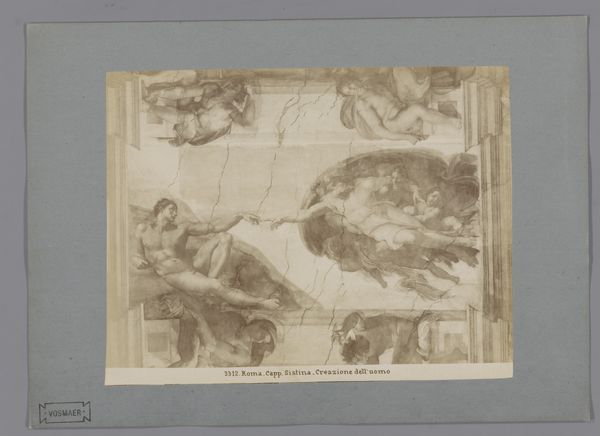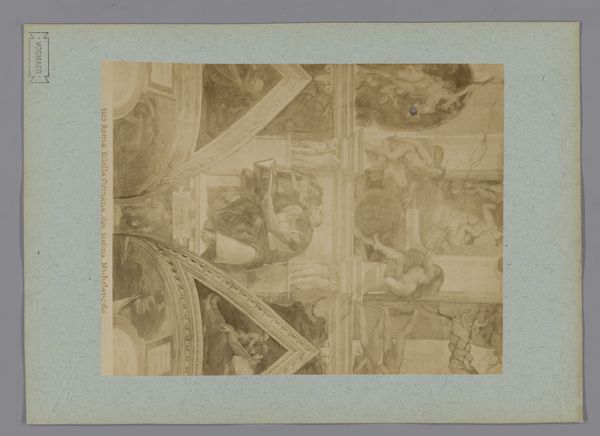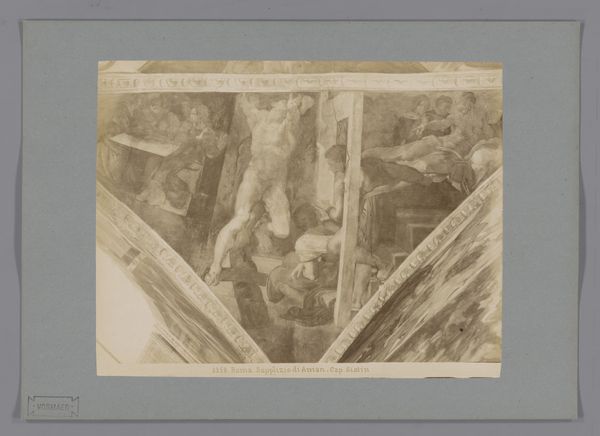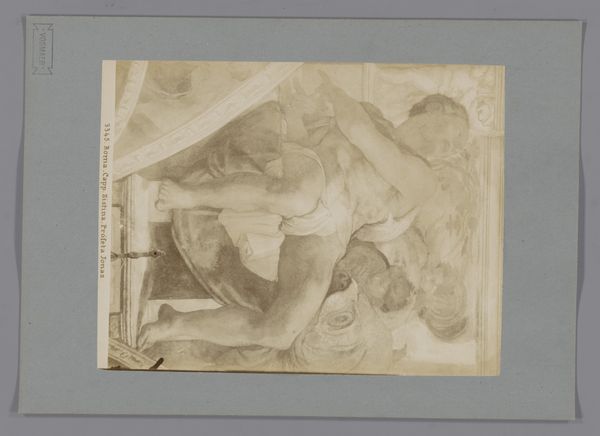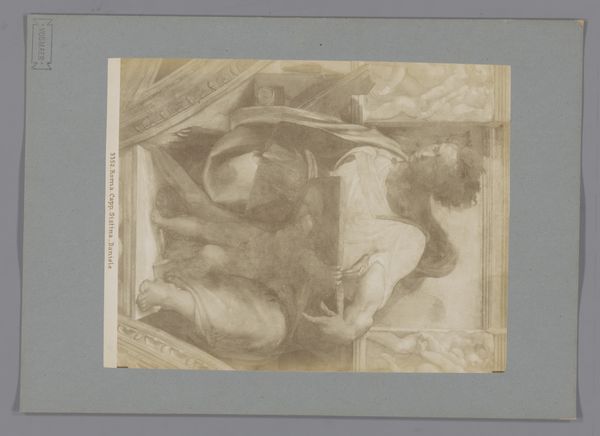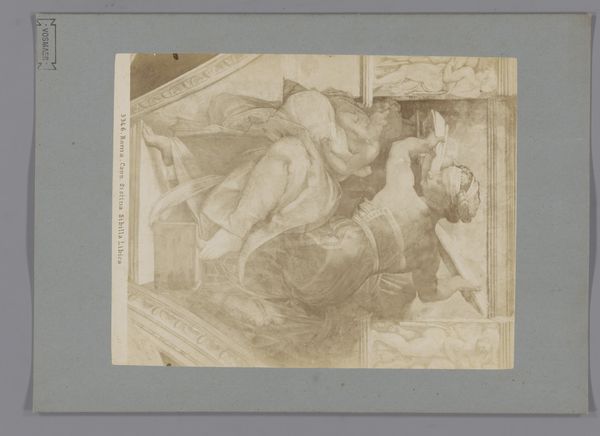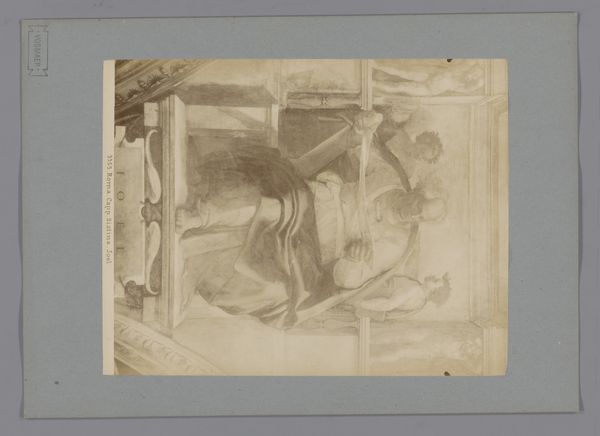
Fotoreproductie van het fresco De slangen van Mozes door Michelangelo in de Sixtijnse Kapel 1851 - 1900
0:00
0:00
anonymous
Rijksmuseum
print, fresco, photography
#
aged paper
#
light colour palette
#
pale palette
#
pastel soft colours
#
muted colour palette
#
pale colours
# print
#
light coloured
#
landscape
#
white palette
#
feminine colour palette
#
fresco
#
photography
#
italian-renaissance
#
soft colour palette
Dimensions: height 197 mm, width 257 mm, height 254 mm, width 354 mm
Copyright: Rijks Museum: Open Domain
Curator: Looking at this pale, almost ethereal reproduction of Michelangelo's fresco, what's your initial response? Editor: My first thought is of its tangible fragility. The muted colours and the texture of the aged paper give it an almost haunting quality, a direct connection to the history it carries. I wonder about the printmaking process used. Curator: Indeed. What we're seeing here at the Rijksmuseum is a photo reproduction of the fresco "The Serpent of Moses" painted by Michelangelo in the Sistine Chapel. It was captured sometime between 1851 and 1900. Thinking about it as a representation rather than the real work challenges some basic presumptions we make. Editor: Absolutely, and considering it as a print—a reproductive medium—shifts the focus to its accessibility. How did such a printed artefact allow a wider audience to grapple with religious and political messages embedded in Michelangelo's original fresco, especially during the period it was created? Curator: Well, let's think about what the fresco itself depicts: mass suffering, divine intervention... Seeing that image reproduced at a specific time and place definitely reframes its historical and social context. Editor: Right. Beyond the religious narrative, I’m intrigued by how the human body is presented, and the social statement being implied by a plague. Who is vulnerable, who is not and the means used by those in power for salvation. This image allows that for exploration. The method by which the piece of art was consumed is essential to its value and its statement. Curator: It makes you wonder about the original fresco's audience compared to who would be seeing this photographic print, what sort of access each group had, what they're able to create from having seen this representation, in essence. It highlights our changing relationship to art and culture over time. Editor: Precisely. This photo print prompts us to critically reassess assumptions around material, medium, production, social narrative and what we value in art history itself. Curator: And that interplay of factors, from artistic creation to cultural understanding, is what makes experiencing historical reproductions such a generative process.
Comments
No comments
Be the first to comment and join the conversation on the ultimate creative platform.
